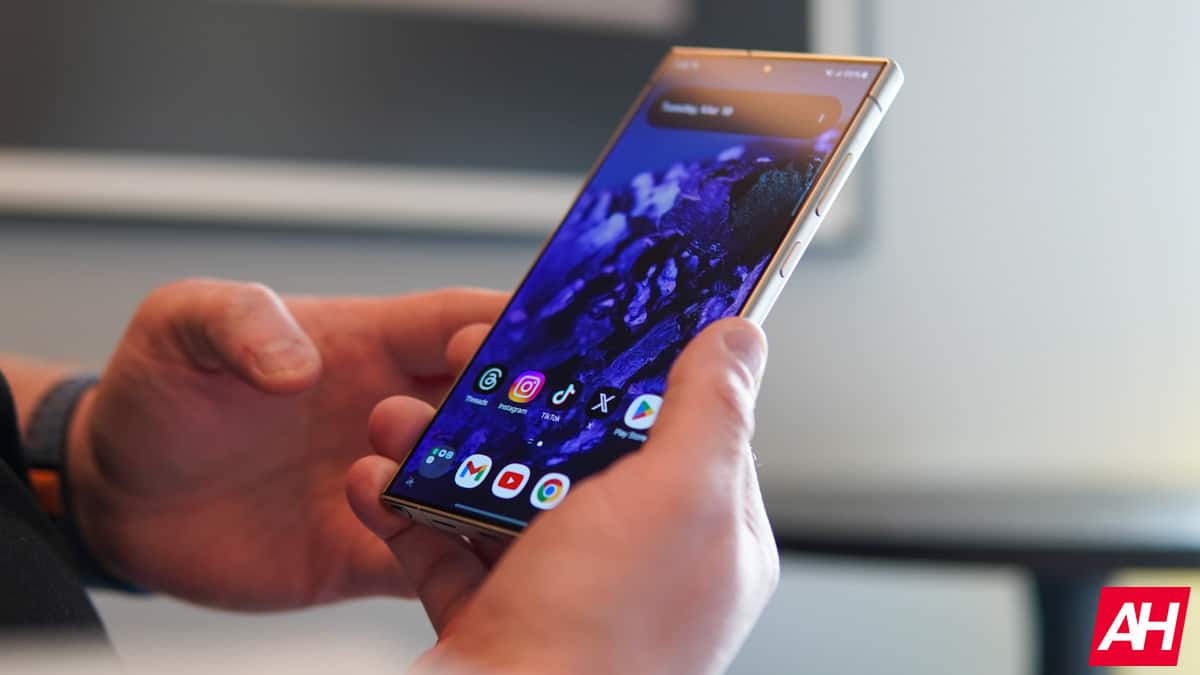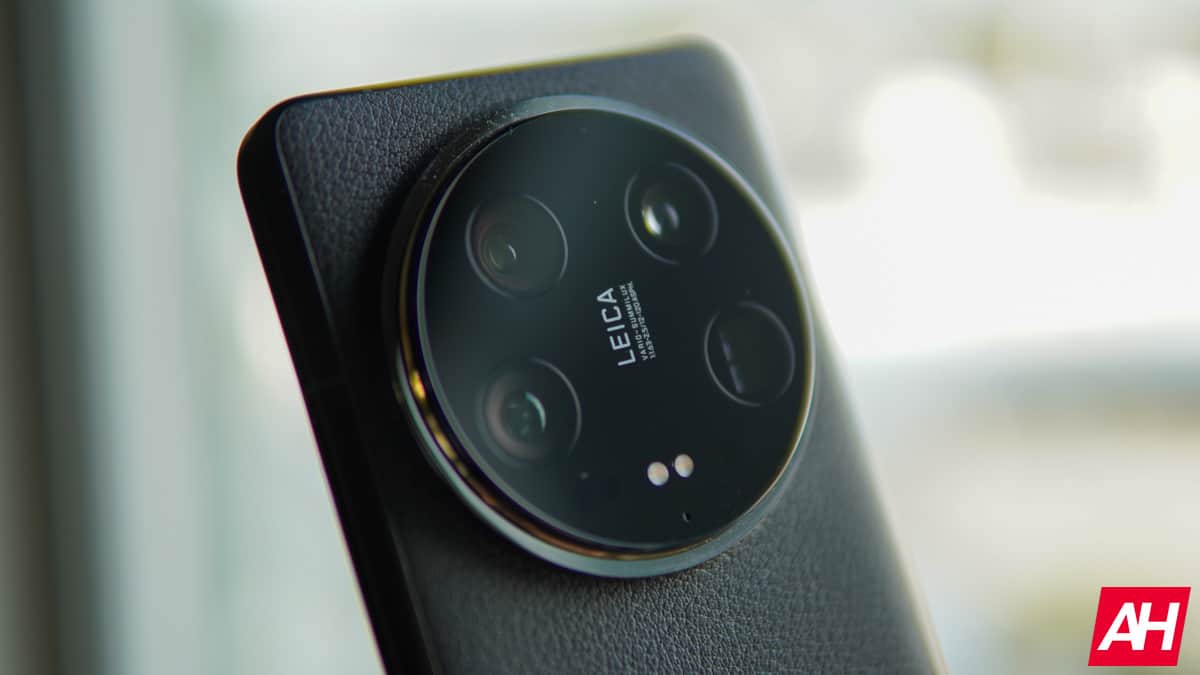Xiaomi announced its ‘Ultra’ flagship not long ago, but it has plenty of competition on the market. Samsung’s ‘Ultra’ phone offering comes to mind, that’s for sure. In this article, we’ll compare those two phones, the Samsung Galaxy S24 Ultra vs Xiaomi 14 Ultra. These two smartphones are both excellent, but they do differ in a number of ways. If you’re in the market for a large flagship, these two are definitely worth considering.
As per usual, we’ll first list the specifications of both smartphones. Following that, we’ll compare them across a number of categories. We’ll compare their designs, displays, performance, battery life, cameras, and audio output. There is plenty to talk about, that’s for sure, so let’s get to it.
Specs
Samsung Galaxy S24 Ultra vs Xiaomi 14 Ultra, respectively
– Screen size:
6.9-inch Dynamic AMOLED 2X (flat, 120Hz, HDR10+, 2,600 nits max brightness)
6.73-inch LTPO AMOLED display (curved, adaptive 120Hz, 3,000 nits max brightness)
– Display resolution:
3120 x 1440
3200 x 1440
– SoC:
Qualcomm Snapdragon 8 Gen 3 for Galaxy
Qualcomm Snapdragon 8 Gen 3
– RAM:
12GB (LPDDR5X)
16GB (LPDDR5X)
– Storage:
256GB/512GB/1TB (UFS 4.0)
512GB/1TB (UFS 4.0)
– Rear cameras:
200MP (wide, f/1.7 aperture, OIS, multi-directional PDAF, 0.6um pixel size), 12MP (ultrawide, 120-degree FoV, f/2.2 aperture, Dual Pixel PDAF 1.4um pixel size), 10MP (telephoto, f/2.4 aperture, OIS, Dual Pixel PDAF, 1.12um pixel size, 3x optical zoom), 50MP (periscope telephoto, OIS, PDAF, 5x optical zoom)
50MP (wide, f/1.6-f/4.0 variable aperture, OIS, multi-directional PDAF, 1.6um pixel size), 50MP (ultrawide, f/1.8 aperture, 122-degree FoV, 0.7um pixel size, dual pixel PDAF), 50MP (telephoto, f/1.8 aperture, 0.7um pixel size, dual pixel PDAF, OIS, 3.2x optical zoom), 50MP (periscope telephoto, f/2.5 aperture, 0.7um pixel size, dual pixel PDAF, OIS, 5x optical zoom)
– Front cameras:
12MP (wide, f/2.2 aperture, Dual Pixel PDAF, 22mm lens)
32MP (wide, f/2.0 aperture, 0.7um pixel size)
– Battery:
5,000mAh
5,000mAh
– Charging:
45W wired, 15W wireless, 4.5W reverse wireless (charger not included)
90W wired, 80W wireless,, 10W reverse wireless (charger included)
– Dimensions:
162.3 x 79 x 8.6mm
161.4 x 75.3 x 9.2mm
– Weight:
232/233 grams
224.4 grams
– Connectivity:
5G, LTE, NFC, Wi-Fi, USB Type-C, Bluetooth 5.3/5.4
– Security:
In-display fingerprint scanner (ultrasonic)
In-display fingerprint scanner (optical)
– OS:
Android 14 with One UI 6.1
Android 14 with HyperOS
– Price:
$1,299+
€1,499
– Buy:
Samsung Galaxy S24 Ultra (Best Buy)
Xiaomi 14 Ultra (Amazon)
Samsung Galaxy S24 Ultra vs Xiaomi 14 Ultra: Design
These two smartphones do look very different. You’ll notice that straight away. The Galaxy S24 Ultra has sharp corners, a flat display, and an entirely different backplate. The Xiaomi 14 Ultra prefers rounded corners and a slightly curved display. You will notice that both smartphones have a centered display camera hole. They both also have very thin bezels around their displays.
The Galaxy S24 Ultra includes five separate circles on the back, four of which are its cameras. The Xiaomi 14 Ultra has a large camera oreo on the back, which is centered, and includes four cameras. That camera oreo does protrude on the back more than the Galaxy S24 Ultra’s separate camera islands. The Galaxy S24 Ultra also comes with a stylus, which is accessible from the bottom.
Now, both smartphones have physical buttons on the right-hand side. The Galaxy S24 Ultra has a titanium frame, while the global variant of the Xiaomi 14 Ultra has an aluminum frame. Samsung opted for a glass back, while both variants of the Xiaomi 14 Ultra that are available globally come with ‘eco leather’ on the back. In other words, that’s vegan leather. The in-hand feel is immensely different. The Xiaomi 14 Ultra is also the grippier of the two thanks to the eco leather back.
The Galaxy S24 Ultra is slightly taller, noticeably wider, and slightly thinner. It is also heavier than the Xiaomi 14 Ultra. It weighs 232 grams compared to 219.8 grams of the global Xiaomi 14 Ultra variant. More variants are available in China, but we’re focusing on the global one. Both devices are IP68 certified for water and dust resistance, by the way.
Samsung Galaxy S24 Ultra vs Xiaomi 14 Ultra: Display
Samsung’s flagship features a 6.8-inch QHD+ (3120 x 1440) Dynamic LTPO AMOLED 2X display. That display is flat, and it supports HDR10+ content. It also offers a dynamic refresh rate which goes from 1 to 120Hz. The theoretical peak brightness of this display is 2,600 nits. The display aspect ratio is 19.5:9, and the screen-to-body ratio is around 88%. The Gorilla Armor from Corning protects this panel.


The Xiaomi 14 Ultra has a 6.73-inch QHD+ (3200 x 1440) LTPO AMOLED display. This display is slightly curved, and it supports both Dolby Vision and HDR10+ content. It has an adaptive refresh rate which goes from 1 to 120Hz. The theoretical peak brightness of the display is 3,000 nits. The display aspect ratio is 20:9, and the screen-to-body ratio is around 89%. The Xiaomi Shield Glass protects this panel.
Now, both of these displays are outstanding. Both of them are very vibrant and offer great viewing angles and deep blacks. The touch response is great on both as well. Both have high PWM dimming to protect your eyes, and both have very good display protection. They’re also very bright in all conditions. The Galaxy S24 Ultra’s panel does have one advantage, the Gorilla Armor protection. Not because it’s much stronger in terms of impact or anything like that, but because of its ability to fight reflections. It’s beyond anything that is currently offered on the market at the moment.
Samsung Galaxy S24 Ultra vs Xiaomi 14 Ultra: Performance
The Samsung Galaxy S24 Ultra is fueled by the Snapdragon 8 Gen 3 for Galaxy SoC. It also comes with 12GB of LPDDR5X RAM and UFS 4.0 flash storage. The Xiaomi 14 Ultra, on the flip side, comes with the Snapdragon 8 Gen 3 processor, along with 16GB of LPDDR5X RAM and UFS 4.0 flash storage. In other words, they’re basically on par when it comes to performance-related specs.
You’ll be glad to hear that they both deliver in the performance department too. Both of these smartphones can handle a lot in regards to performance. They can multitask with ease, while every single regular task is very easy for them, even when you really try to push them. Browsing, taking pictures, image processing, video processing, they both do all that without a hitch. The animations are also spot-on, and there’s no lag to speak of.
The same can be said for gaming as well. Even when we pushed them really hard with Genshin Impact, both smartphones did a fantastic job. They both did get warm, but not hot nor did the performance suffer. Other games are no issue either, everything runs perfectly fine. So you should be fine with either phone when it comes to performance, at least for the time being. Their fingerprint scanners also perform really well.
Samsung Galaxy S24 Ultra vs Xiaomi 14 Ultra: Battery
Both smartphones include a 5,000mAh battery. The Chinese variant of the Xiaomi 14 Ultra does come with a slightly larger battery, but we’re focusing on the global model. Their displays are similar in terms of size, and they have similar SoCs too. The software is different, though, of course, and thus is the optimization that the two companies did to them. Both phones provided us with very good battery life, but the Galaxy S24 Ultra had more to offer in that regard.
Getting to around the 7.5-8-hour screen-on-time mark with the Xiaomi 14 Ultra was not a problem for us. The Galaxy S24 Ultra was able to push well beyond that, though. It also lasted considerably longer in our battery drain test, in case you’re wondering. We did use both of them on WiFi most of the time, though, and gaming was not included in those days. Your mileage may vary, of course, so keep that in mind. Both phones do offer great battery life, though.
When it comes to charging, the Xiaomi 14 Ultra simply destroys the Galaxy S24 Ultra. It supports 90W wired, 80W wireless, and 10W reverse wireless charging, while a charger is included in the box. The Galaxy S24 Ultra supports 45W wired, 15W wireless, and 4.5W reverse wireless charging, and it comes without a charger. Xiaomi’s 80W wireless charging is much faster than the Galaxy S24 Ultra’s 45W wired charging, by the way.
Samsung Galaxy S24 Ultra vs Xiaomi 14 Ultra: Cameras
The Samsung Galaxy S24 Ultra features a 200-megapixel main camera, a 12-megapixel ultrawide unit (120-degree FoV), a 10-megapixel telephoto camera (3x optical zoom), and a 50-megapixel periscope telephoto unit (5x optical zoom). The Xiaomi 14 Ultra, on the flip side, has a 50-megapixel main camera, a 50-megapixel ultrawide unit (122-degree FoV), a 50-megapixel telephoto camera (3.2x optical zoom), and a 50-megapixel periscope telephoto camera (5x optical zoom). Xiaomi’s flagship also comes with Leica lenses and expertise.


Both smartphones do a great job in terms of photography, but we prefered the results from the Xiaomi 14 Ultra most of the time. During the day, both smartphones do a great job. The Galaxy S24 Ultra does lean towards warmer tones, and some images do look a bit more processed, and more sharpening is noticeable. Both phones handle HDR situations really well, though very different at the same time.
When the light goes away, the Xiaomi 14 Ultra prowess comes to light. Low-light pictures from the phone are outstanding. The balance that the phone provides is top-of-the-line. The Galaxy S24 Ultra also does a fine job, but we did prefer the Xiaomi 14 Ultra’s output most of the time. The same goes for its secondary cameras, by the way. Do note that we used the Leica Vibrant option on the Xiaomi 14 Ultra most of the time. Macro shots from both smartphones looked very nice, but once again, we did prefer the Xiaomi 14 Ultra’s output in most cases. It’s hard to deny that both do a great job in terms of photography.
Audio
You will find a set of stereo speakers on both of these smartphones. They’re both more than loud enough, though the Galaxy S24 Ultra’s setup is slightly louder. Their output is great on both, and well-balanced.
Neither phone includes a 3.5mm headphone jack, though. You can always use their Type-C ports for wired audio connections, though. Alternatively, both smartphones support Bluetooth connectivity. The Galaxy S24 Ultra comes with Bluetooth 5.3, while the Xiaomi 14 Ultra offers Bluetooth 5.4 support.










